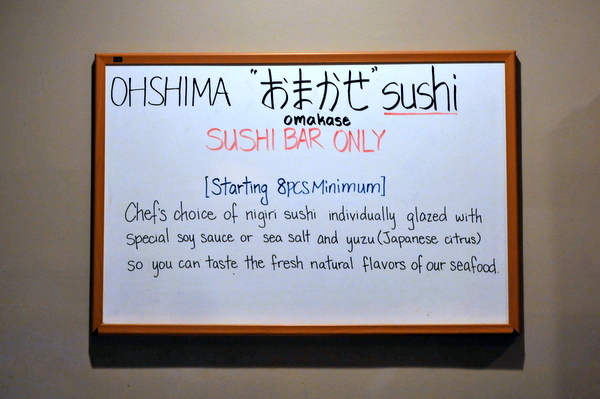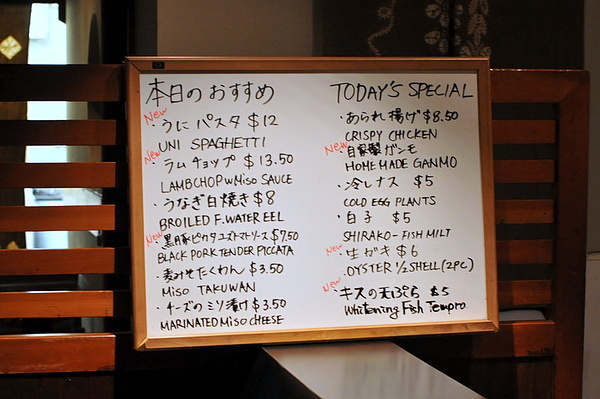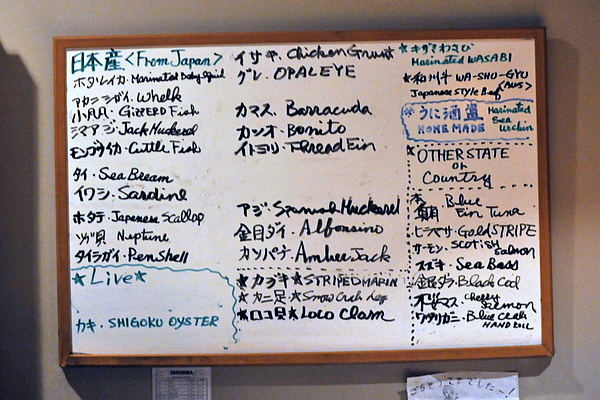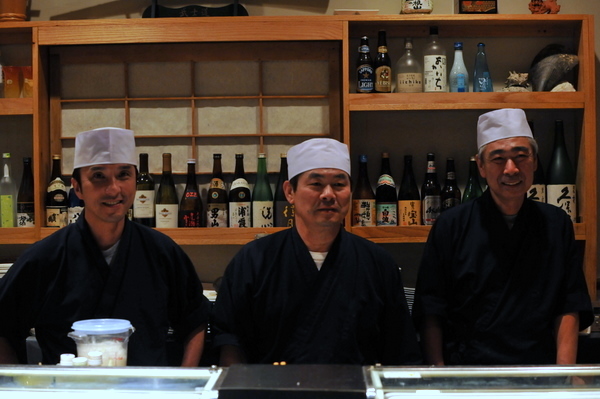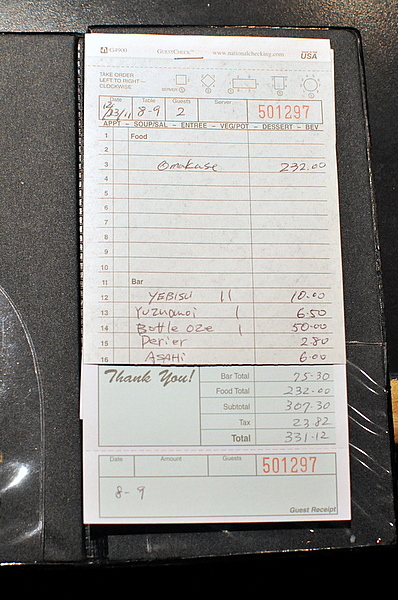Frasca | "Spiedino" - Berkshire Acorn Pork, Treviso, Lemon and Arugula Pesto
2008 Iuli Umberta, Barbera del Monferrato, Piedmonte, Italy
I consider myself extremely lucky, visiting Frasca right as Chef Mackinnon-Patterson is preparing for a local competition called Cochon 555. Dubbed a "touring porcine bacchanalia-slash-competition" consists of 5 chefs, 5 pigs, 5 winemakers. As a result, the kitchen at Frasca has benefited from a plethora of heirloom pork to work with, in this case an acorn-fed Berkshire variety. Spiedino translates to skewer or kebab and indeed the pig is sublime, firm and nuanced texture with just a slight fatty tenderness. The slight oily sweetness is offset by a lovely vegetal tang reminiscent of a salsa verde. The salad added some texture and moisture but the pork effortlessly stands on its own.

TAG | Pork Belly
The core of this dish is a pork belly confit that turned out tender and surprisingly well balanced especially in conjunction with the swoosh of celery root puree. The sauce was a concoction called "umami butter," an utterly decadent combination of aged cheddar, burre blanc, soy, sake, and shiitake mushroom. The topping was a miniature new style sashimi preparation with Tiger Shrimp, ginger and chili that still managed to stand out against the heavy. It is this masterful balance between the disparate flavors that made this entry by CdC Jensen Cummings the best dish of the night.

N\Naka | Kani Koramushi - Egg, Shitake, Black Truffle
This course is marvelous plain and simple. Kevin compares it to the hairy crab at Urasawa which he labels the best thing he ever ate there. The shredded crab comes in a shitake broth, its umami-tinged earthiness a welcome foil to the crustacean's natural sweetness. The yolk adds a deluge of viscous runny goodness that gives the dish a silky satisfying weight on the palate. The black truffle shavings add a final punctuation of luxury and complexity to the dish.

Bistronomics 2.0 | lamb / kumquat / carrot confit - grilled lamb chops marinated with cumin and sumac ,kumquat yogurt , carrot confit with ginger and saffron
There is something satisfying on a primal level about eating meat with your hands, feeling the rush of of iron-tinged meat jus that gushes forth as you tear the rare flesh from the bones. Without question the lamb chops stand on their own; exquisitely seasoned with an immensely delicious marinade of cumin and sumac. Next time forget the fancy decorations on the plate and give me another piece!

The Restaurant at Rancho Valencia | pacific northwest morels, hazelnuts & pine
This was probably the most intriguing course of the night; the various elements work in perfect concert to create an edible "forest floor." the sappy sweet aroma of pine is immediately evident in the soil and taken with the morels enhances the profound earthy smokiness of the mushrooms. The trio of greens: stinging nettles, wood sorrel, and yarrow add an herbal vivacity to the dusky weight of the fungi and soil.

Ibaraki Japan Benefit Dinner @ Breadbar | Michael Cimarusti: Soymilk Panna Cotta - Santa Barbara Sea Urchin, Geoduck Clam & Fresh Wasabi
Ephiphany 2009 Riesling Santa Barbara County, California
Visually this course was nothing less than a work of art and if anything it tasted even better than it looked. Hidden under the foliage were generous pieces of sweet creamy roe. The flavor of the uni simply resonates through the panna cotta leaving a lingering essence of the sea on the palate. Hands down this was the best course of the evening and it might rank as one of the best things I've eaten all year!


Atelier Crenn | "Olives" - Fennel, Lemon, Almond
2006 Von Hovel, Riesling Auslese, Mosel
From the conception, presentation, and execution this was easily one of the most impressive desserts I've ever encountered. The story behind the dessert is a olive fresh off the tree. Instead of a true olive the focus of the dish is an EVOO ice cream reconstituted on an olive branch. Accompanying the "olive" are a lemon ice, fennel jam, and almond nougatine. Don't as me how it works out so well, but combination is absolutely spectacular. Easily the best dessert I've eaten all year.

Saison | cru
Mahoney, Albarino, Carneros, 2007
I don't know what how the chef came up with the name but the dish itself consists of the most seductive flavorful tuna tartare that I've ever had. The bright red flesh was torn by a scallop shell then mixed with a roasted blend of fish fat and sinew giving the mixture an extravagant oily char reminiscent of grilled toro. If that weren't enough the dish was paired with gelee made from marrow extracted by boiling fish bones and white soy sauce that gave the dish a lighter more savory brine. A rice cracklin topped with shrimp floss and river vegetables provides a brazenly salty textural variance. The third component was a shot of spinal jelly that we were told to eat midway through the course. With a flavor like a muted saltwater, the jelly helped reset the palate between bites of the tuna. This was so good we asked for seconds.

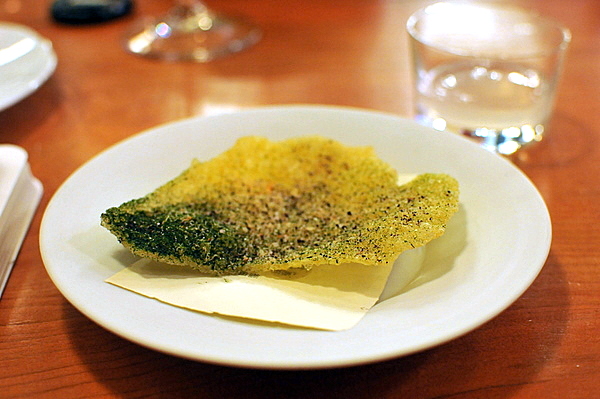
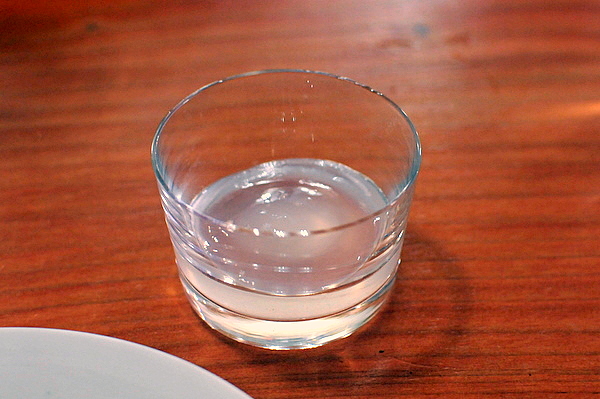
The French Laundry | MARCHO FARM NATURE-FED VEAL - "Lasagne de Langue de Veau," Toybox Tomatoes, Globe Artichoke, Romaine Lettuce and Castelmango "Mousseline"
Tenuta Friggiali, Brunello di Montalcino, "Donna Olga," Tuscany, 2004
The veal's sheer profundity and depth of flavor coupled with its exquisite texture was nothing short of magnificent. The lasagna of veal tongue provided complex nuances of a robust and slightly piquant salinity while the verdant succulence of the lettuce and sharp zing of the tomatoes added a contrasting levity to the meat. I used to wonder what all the hubbub about veal was; leave it to Keller and his crew to open my eyes.

2011 White Truffle Dinner @ LQ@SK | Rabbit Tartare - with Truffle, Celery Root Truffle Remoulade, Argan Oil Vinaigrette
This was my first time having raw rabbit and hopefully not the last. The texture and flavor reminded me of a hamachi enlivened by a peppery kick and the heavenly aroma of white truffle. The celery root added a sense of complexity and contrast to what was already an immensely delicate and satisfying course, making this my favorite of the night. As an aside, the dish proved so beloved that Laurent brought it back at a subsequent LQ@SK dinner, something he never does.

Read more.


